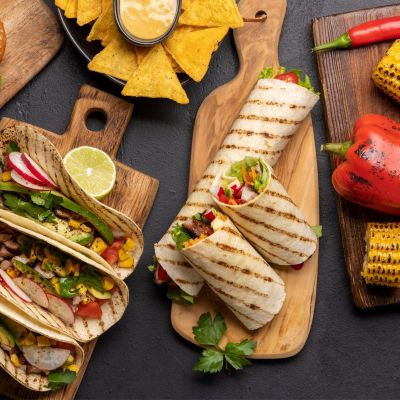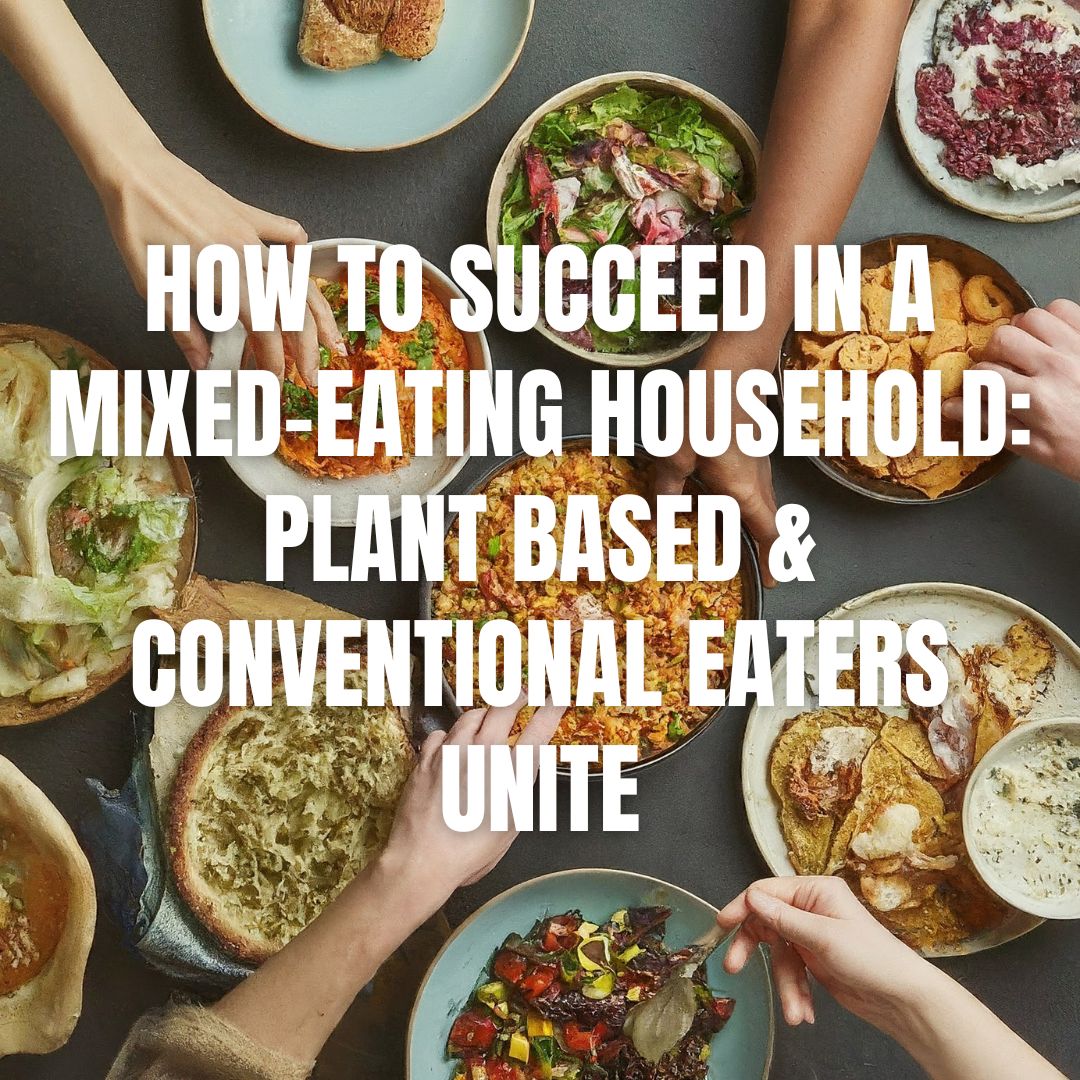Living in a household with diverse dietary preferences can be a rewarding experience, but it does come with its own set of challenges. Whether you’re a plant-based enthusiast cohabiting with omnivores (aka conventional eaters) or vice versa, finding common ground in the kitchen fosters a harmonious and inclusive atmosphere. In this blog, we’ll explore practical tips for living in a mixed-eating household, covering everything from meal prep and grocery shopping to organization and communication.
Preparation Harmony in Mixed-Eating Households
Creating adaptable recipes that cater to different dietary preferences is key to maintaining “preparation harmony.” By fostering an environment where both plant-based and conventional eaters feel included, mealtime becomes a collaborative and enjoyable experience.
Shared Staples
While dietary preferences may differ, there are plenty of common ingredients that both plant-based and conventional eaters enjoy. Stocking up on common versatile PLANT-BASED PANTRY STAPLES such as rice, pasta, beans, and a variety of vegetables creates a strong foundation for meals that can be easily adapted.
Customizable Dishes
Meals that allow for personalization are a great way to accommodate diverse dietary needs. Think of dishes like stir-fries, grain bowls, or pasta dishes where each person can select their preferred protein—whether it’s tofu, tempeh, chickpeas, chicken, or shrimp.
Another easy approach is to serve a hearty side dish with separate protein options, such as grilled chicken or simple steak for conventional eaters and a plant-based alternative like a mushroom-based MEATI CUTLET.
Flexible Recipes
Many recipes can be adjusted to suit different preferences. For example, a vegetable casserole can be prepared with the option for conventional eaters to add their own protein on the side. Similarly, big pots of soup or chili can be plant-based, with an option to serve conventional proteins separately.
Shopping Smart
Efficient grocery shopping ensures that both plant-based and conventional eaters have everything they need while keeping the process streamlined and stress-free.
Collective Grocery Lists
A shared grocery list that includes both plant-based and conventional items ensures that everyone’s preferences are accounted for. Keeping a running list throughout the week makes meal planning and grocery shopping easier.
Label Reading
Familiarizing yourself with food labels helps ensure that plant-based and conventional eaters can select foods that align with their preferences. Look for products that overlap, such as plant-based milk or meat alternatives, which may be enjoyed by the whole family.
Exploring Specialty Stores
Visiting specialty grocery stores or plant-based sections in larger supermarkets can introduce a wider variety of plant-based options, making it easier to keep meals fresh and exciting.
Organization is Key For Mixed-Eating Household Success
A well-organized kitchen makes meal preparation easier and reduces the chance of cross-contamination.
Dedicated Spaces
Designating separate areas for plant-based and non-plant-based ingredients helps avoid confusion in a mixed-eating household. Using different cutting boards and utensils for plant-based and conventional meal prep also ensures a smoother cooking experience.
Meal Planning
Planning meals in advance helps ensure a balance of both plant-based and non-plant-based options throughout the week. This can make grocery shopping more efficient and prevent last-minute stress.
Taco Tuesday: A Perfect Mixed-Eating Meal

Taco Tuesday is an excellent example of a meal that easily caters to both plant-based and conventional eaters in a mixed-eating household. The beauty of this meal is that it can be endlessly customized with different toppings and sides each week. Here’s how to set up a taco night that everyone will enjoy:
The Base
- Soft or hard taco shells
- Lettuce wraps for a low-carb option
Protein Options
- For plant-based eaters: Beef-less ground taco filling—simply sauté beef-less ground with taco seasoning for a flavorful, satisfying option.
- For conventional eaters: Classic seasoned ground beef, cooked with traditional taco spices and tomato sauce.
Toppings
- Shared favorites: Diced tomatoes, shredded lettuce, salsa (mango salsa, pico de gallo, or traditional tomato salsa), and guacamole.
- Additional choices: Sliced jalapeños, black beans, corn kernels.
- Dairy options: Offer both vegan and conventional sour cream so that everyone has a choice.
Sides
- Mexican rice
- A refreshing side salad
Setting up a DIY taco station allows each family member to build their ideal taco, making Taco Tuesday a fun and inclusive mealtime tradition.
Finding Balance in Social Situations
Navigating social situations, such as hosting guests or attending family gatherings, can present additional challenges for a mixed-eating household. Here are some strategies for making social events more enjoyable:
Hosting Meals
When hosting, serve meals that can be easily adapted, such as build-your-own pasta bars, customizable pizza nights, or hearty salads with separate topping options. This way, guests can create a plate that aligns with their dietary choices.
Dining Out
If dining out, look for restaurants that offer a variety of options to accommodate different dietary needs. Many establishments now have plant-based choices, making it easier to find something for everyone.
Communicating Preferences
Openly discussing dietary preferences with family and friends can help avoid awkward situations. Sharing plant-based dishes at gatherings can also introduce others to delicious alternatives they might not have considered before.
Communication is Key
Encouraging open dialogue about dietary preferences ensures that everyone in the household feels heard and respected. Asking family members to share their favorite meals or recipes can lead to creative and inclusive meal planning.
Balancing the needs of a mixed-eating household doesn’t have to be difficult. With a little planning, flexibility, and communication, you can create an environment where plant-based and conventional eaters can coexist harmoniously at the dinner table. The key is to embrace adaptability, celebrate shared meals, and focus on what brings everyone together—delicious food and quality time.a sense of unity and understanding.






